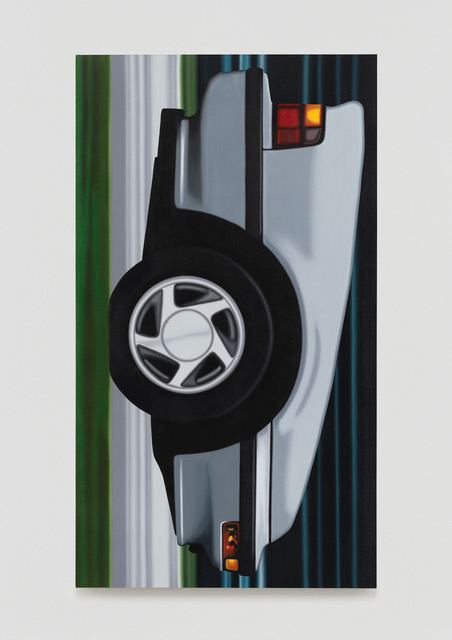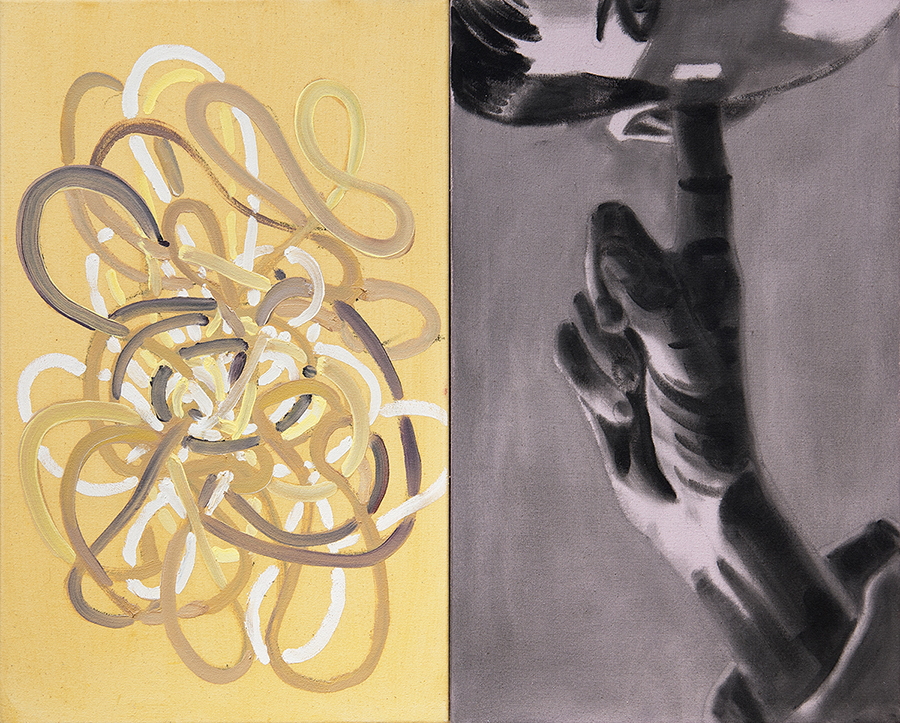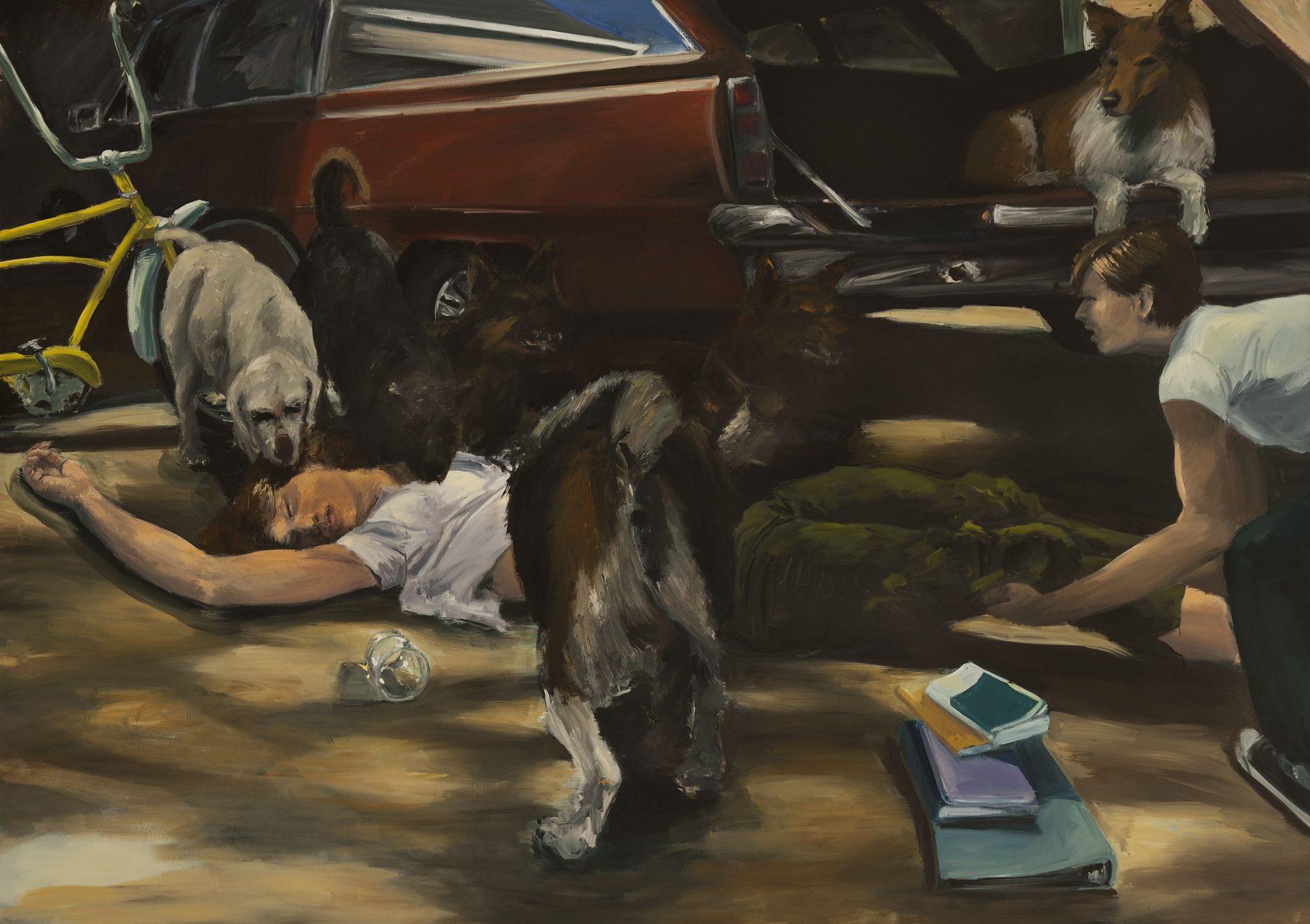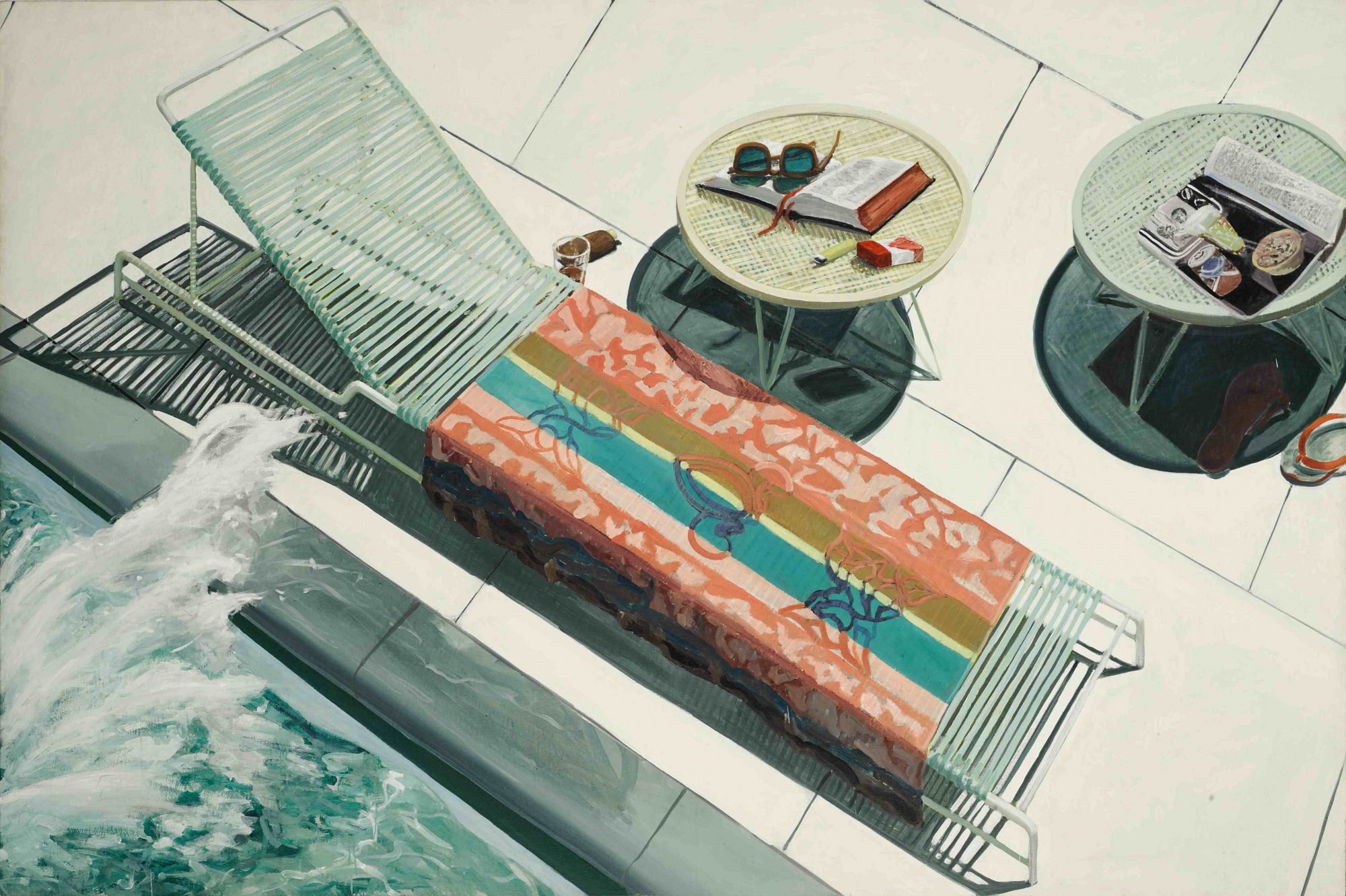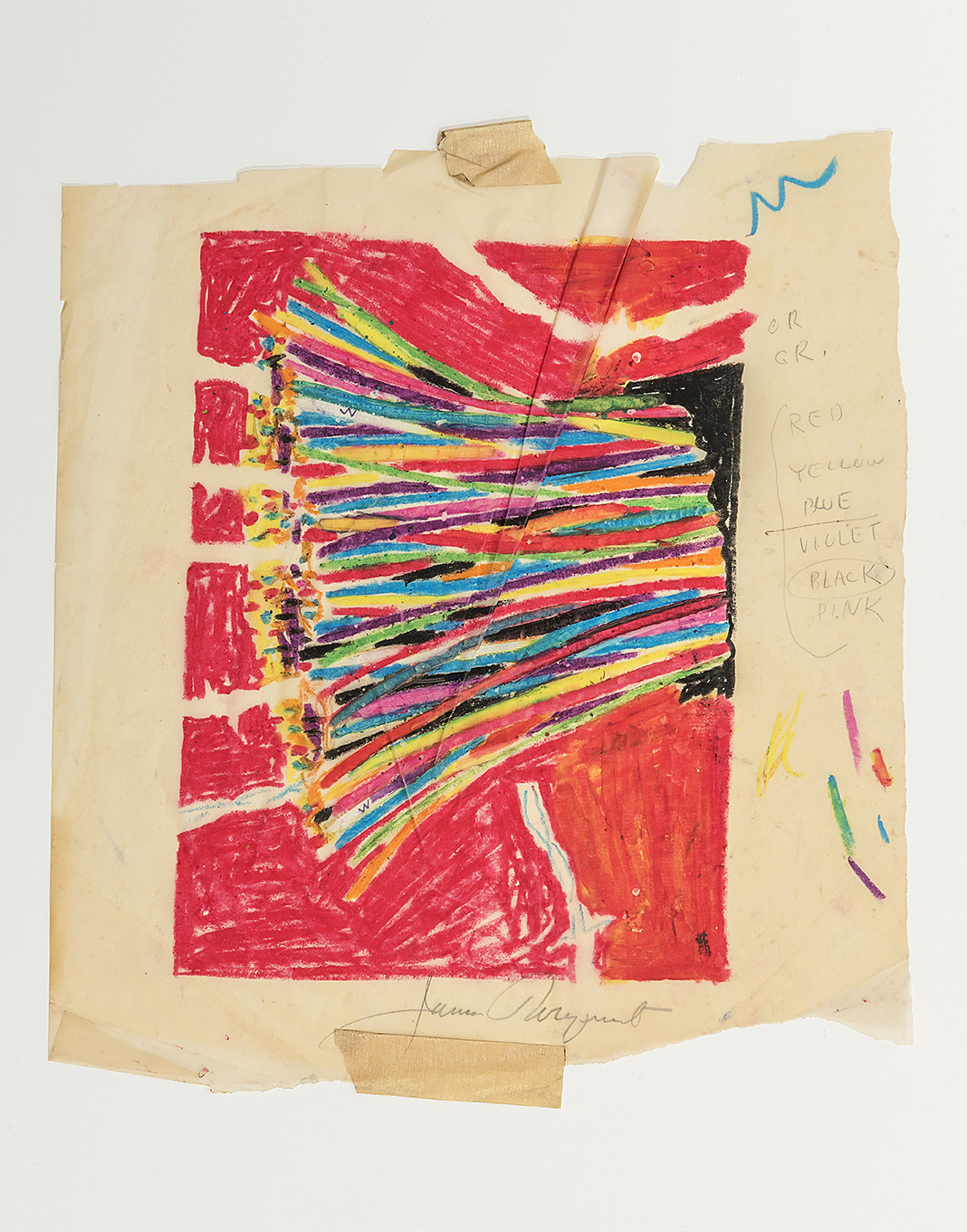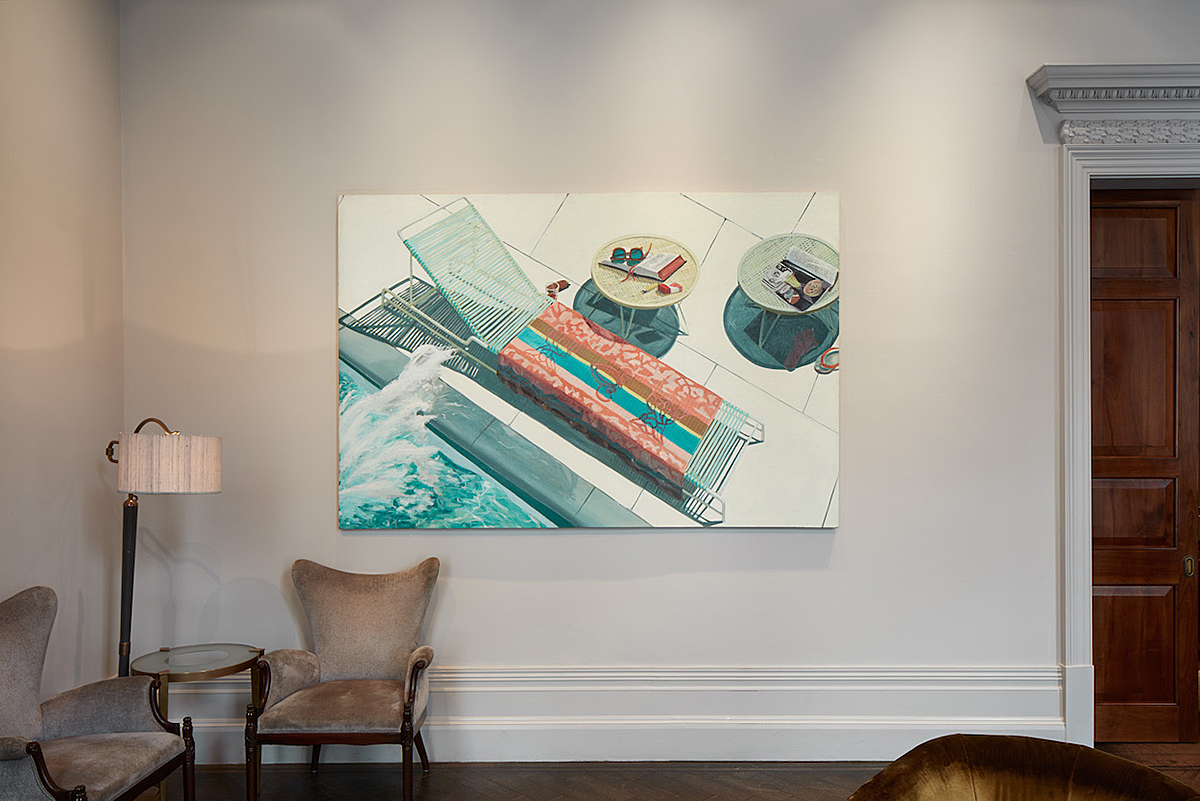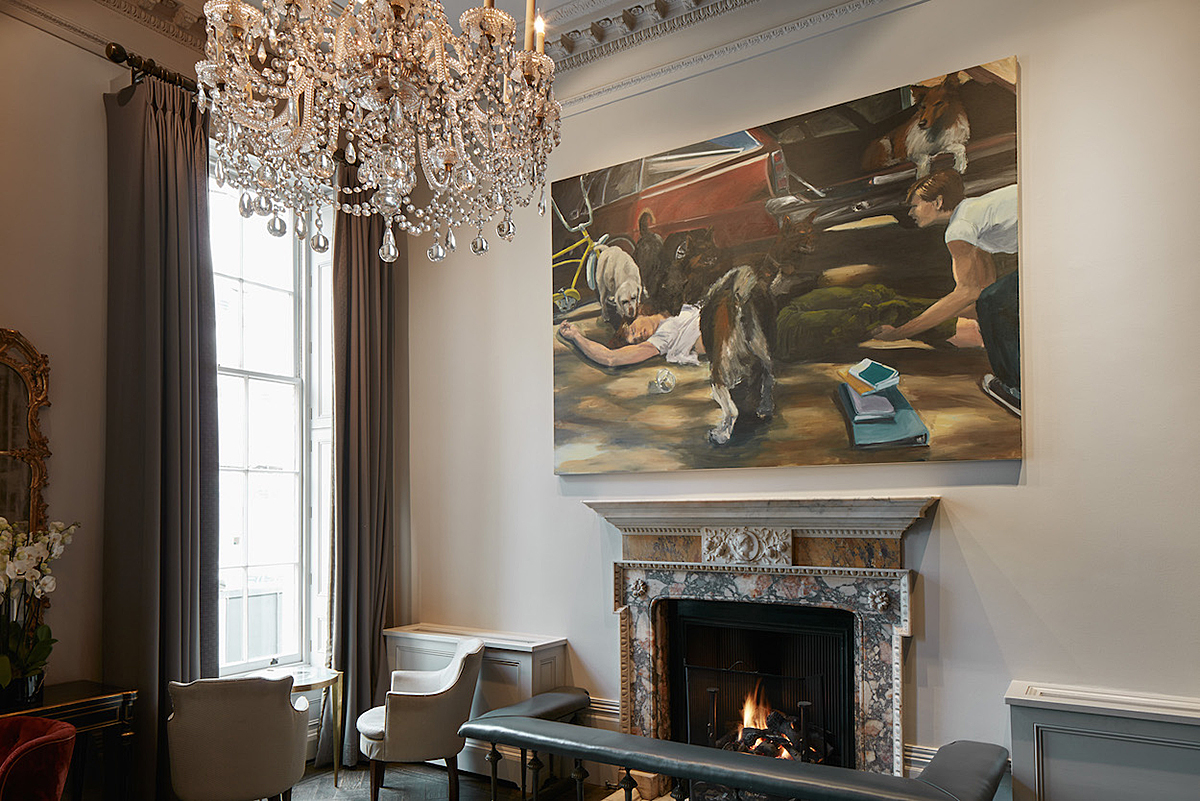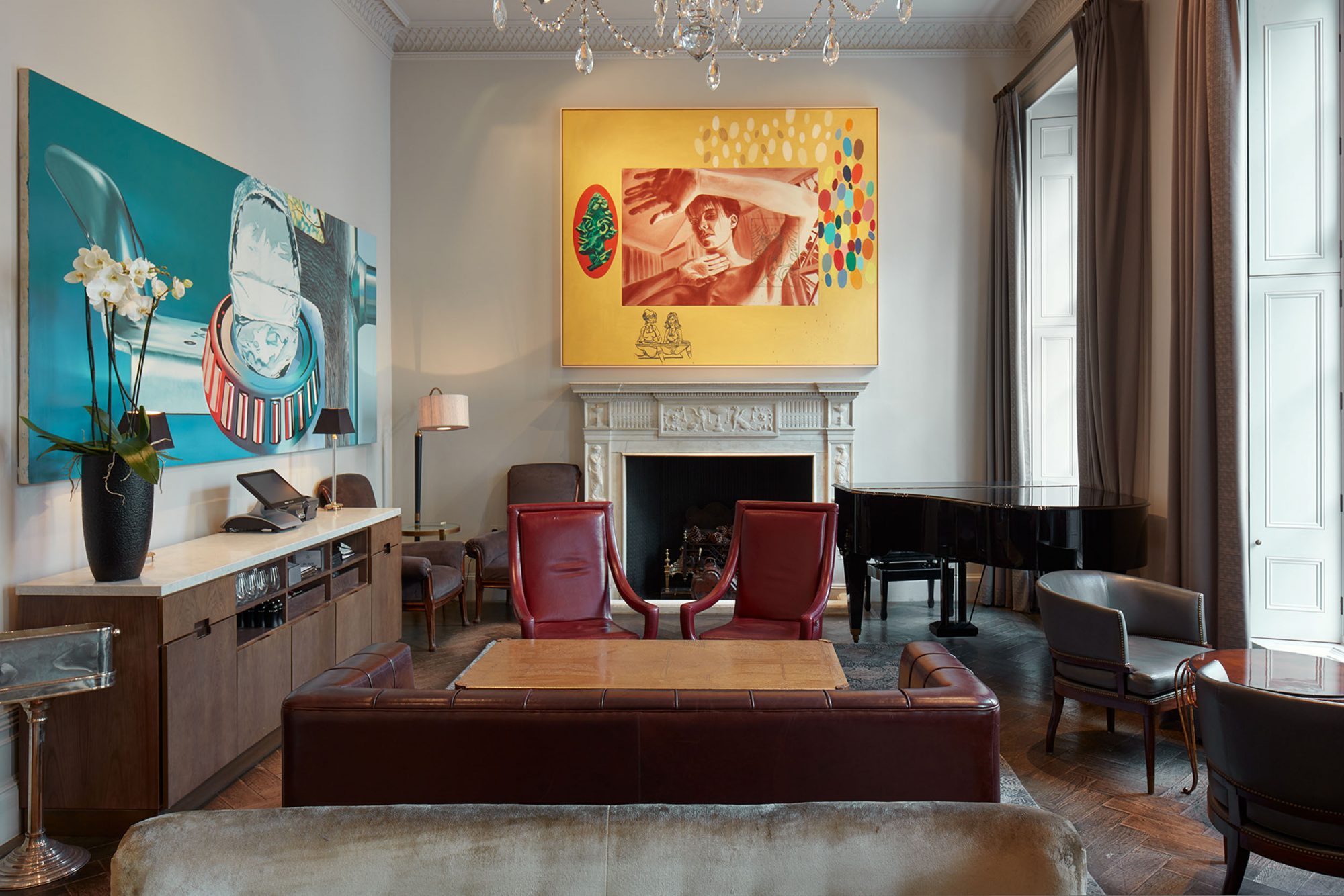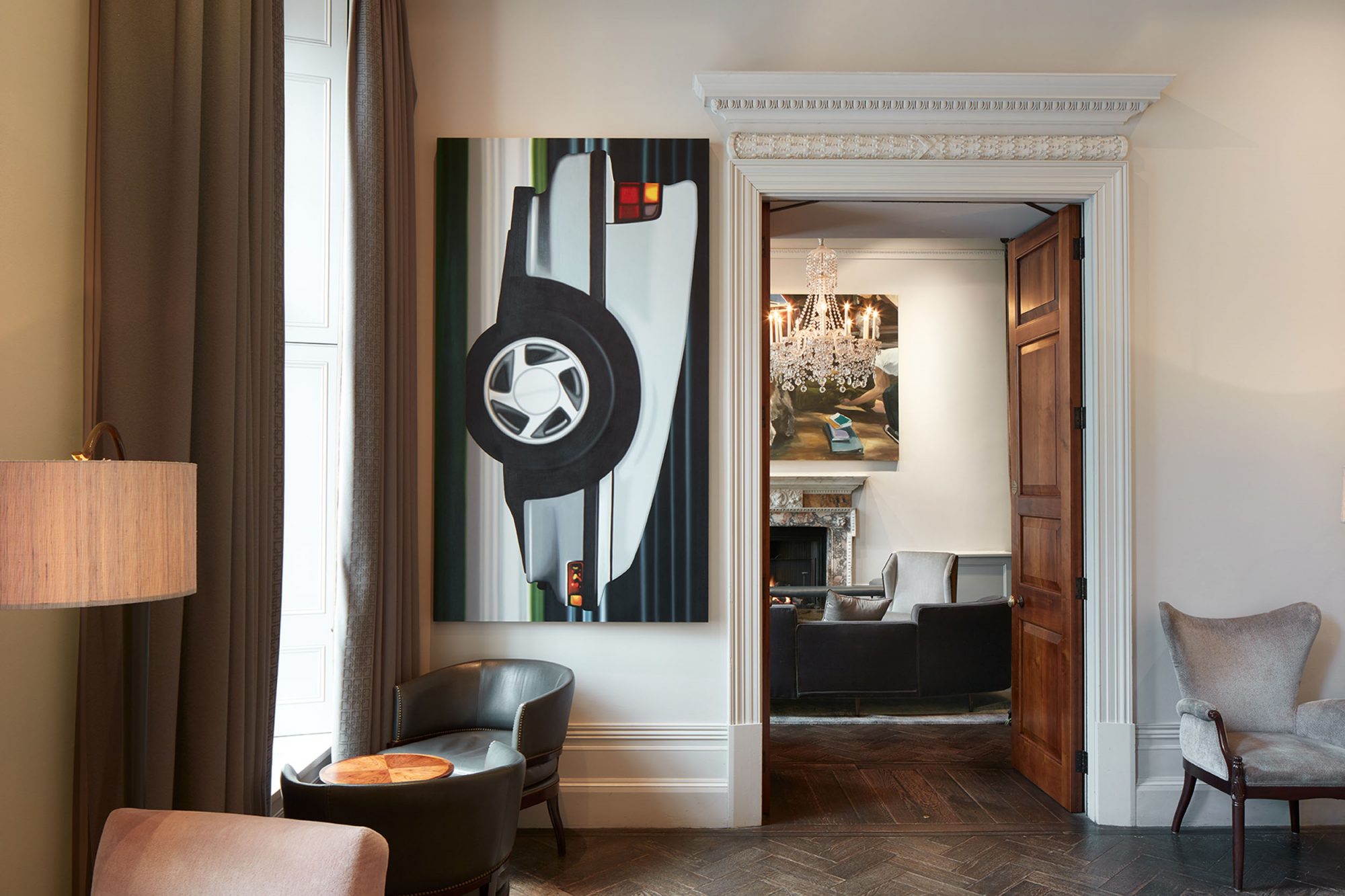RUNNING WILD: 80s painting in America
— The Arts Club, London
Installation view (Peter Cain, Eric Fischl), Running Wild, The Arts Club
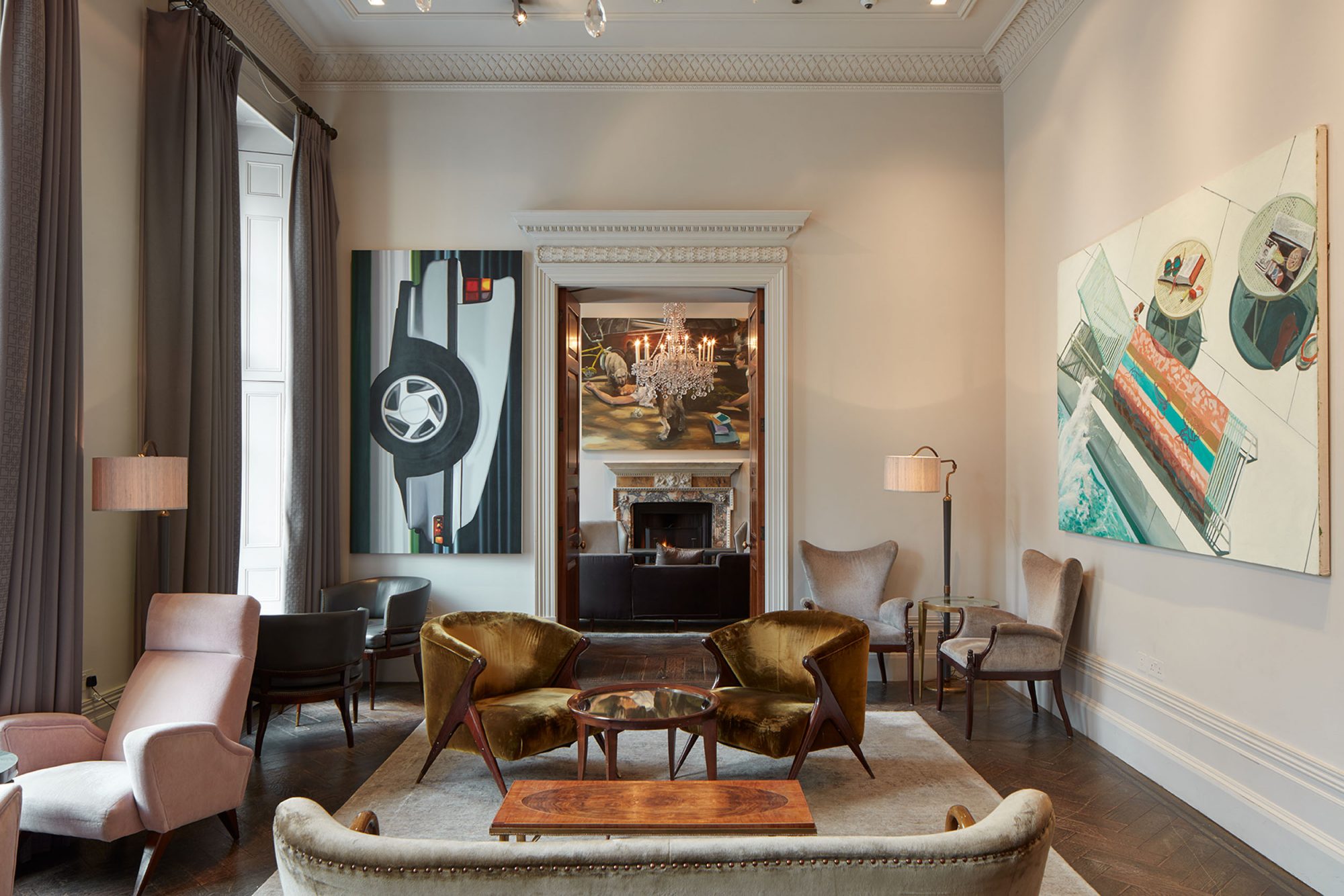
Tap to view slideshow
Running Wild includes key masters from the re-establishment of painting in the 1980s, united in their criticism of media and socio-political climate at the time.
Perhaps no era is so instantly associated with brash wealth, conservative values, American confidence and rampant consumerism as the 1980s; Reagan-omics fueled bullish markets and unrestrained profit, and the middle classes continued flocking to the suburbs in search of the American Dream. As advertisements, glossies and society magazines fed visions of champagne-fueled parties and non-stop glamour, artists turned to the peculiar discontents, anxieties and profound ennui lurking beneath this lifestyle, most notably in painting, a medium resurrected after falling out of favour in the 1970s.
Running Wild examines the boisterous re-emergence of painting as a popular medium in the wake of the dominance of conceptual, sculptural and ephemeral practices in the 1970s. Within that sphere, the exhibition focuses on figuration and its deftness in pinpointing anxiety about hyper-consumerism and suburbia. The key painters in the exhibition include Eric Fischl, whose psychologically charged depictions of suburbia draw on his dysfunctional childhood in the wealthy peripheries of New York; and David Salle, who collaged together images from pop-art to historic paintings and abstraction, pastiching and creating a post-modern dialogue. By the late 1980s Peter Cain began his series of dismembered or morphed cars, evoking the slick language of advertising to portray a kind of empty machismo. Also included is James Rosenquist, who by the 1980s was gaining notoriety and making paintings referencing domestic spheres where mundane objects are rendered strangely dangerous: lipsticks are positioned like missiles and groceries threaten to topple over.
Running Wild examines the boisterous re-emergence of painting as a popular medium in the wake of the dominance of conceptual, sculptural and ephemeral practices in the 1970s. Within that sphere, the exhibition focuses on figuration and its deftness in pinpointing anxiety about hyper-consumerism and suburbia. The key painters in the exhibition include Eric Fischl, whose psychologically charged depictions of suburbia draw on his dysfunctional childhood in the wealthy peripheries of New York; and David Salle, who collaged together images from pop-art to historic paintings and abstraction, pastiching and creating a post-modern dialogue. By the late 1980s Peter Cain began his series of dismembered or morphed cars, evoking the slick language of advertising to portray a kind of empty machismo. Also included is James Rosenquist, who by the 1980s was gaining notoriety and making paintings referencing domestic spheres where mundane objects are rendered strangely dangerous: lipsticks are positioned like missiles and groceries threaten to topple over.
The exhibition is curated by Amelie von Wedel and Pernilla Holmes from Wedel Art. Both Eric Fischl and David Salle are represented by Skarstedt London and New York. James Rosenquist is represented by Galerie Thaddaeus Ropac and Peter Cain is represented by Matthew Marks gallery.
